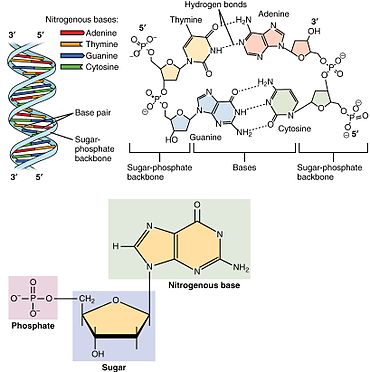- Nucleotides contain a phosphate group, a base ( either a purine: adenine & guanine or a pyrimidine: thymine, uracil and cytosine), and a pentose sugar (deoxyribose/ ribose) joined in a condensation reaction, the phosphate joins to carbon 5 of the sugar and the base joins to carbon one.
- Nucleotides are joined in a condensation reaction between the sugar of one nucleotide and the phosphate group of the other nucleotide via phosphodiester bond.
- Many nucleotides join together to form single stands in RNA, complimentary base pairing allows hydrogen bonding between bases holding DNA in a double stranded structure, two H bonds form between A and T, three between C and G.


How the condensation reaction occurs between nucleotids
ReplyDeleteI just want to thank you for sharing your information and your site or blog this is simple but nice Information I’ve ever seen i like it i learn something today. Uracil
ReplyDelete